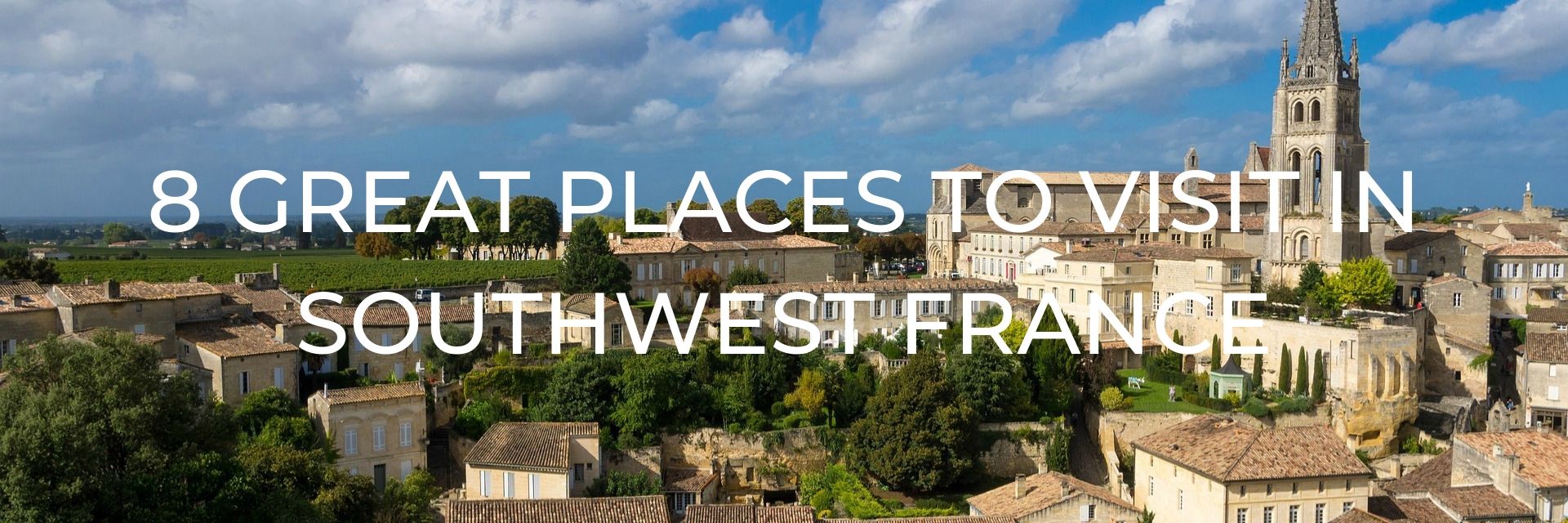
The southwest of France includes the Dordogne and Languedoc regions and within those regions, you’ll find lots of variety. This is especially true with the landscapes which include beaches, vineyards, forests, mountains, and fortified villages.
In the Dordogne river valley, you’ll find a blend of natural and man-made beauty with walnut orchards, tobacco plants and cornfields along with prehistoric artifacts and limestone caves. There are also stone fortresses standing guard over the river that once separated Britain and France during the Hundred Years’ War.
The Languedoc region has been home to the Moors, Charlemagne, and Spanish. The Spanish influence is still felt in the area so you can find delicious paella. Although similar to the climate of Provence with the sea and grapes, this area doesn’t get as many tourists so you can be one of the few to explore this gem!
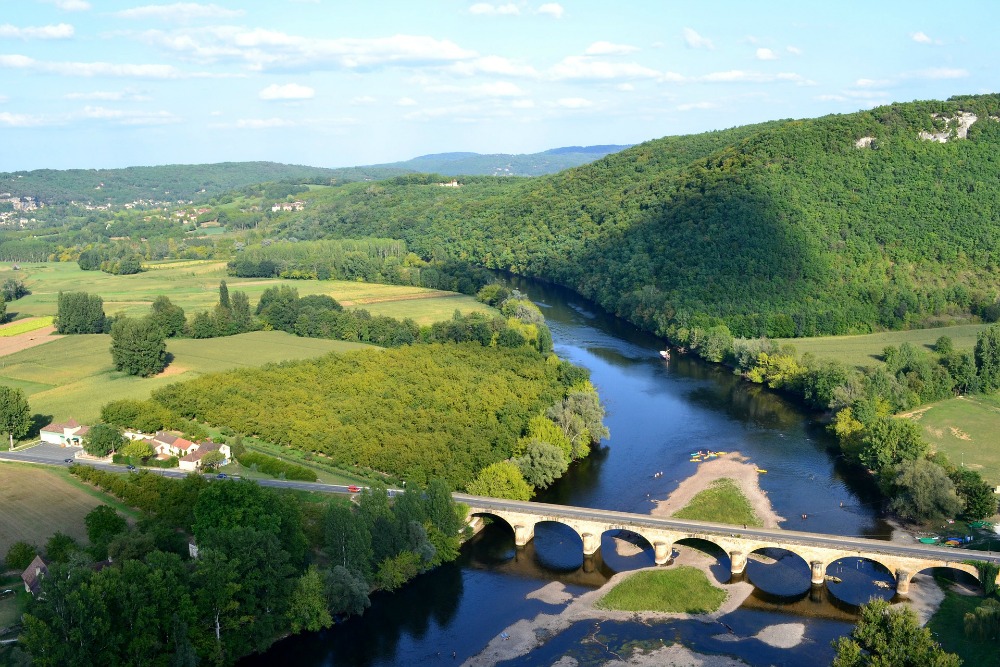
A visit to this part of France offers so much to visitors so whether you’re visiting for a weekend, a week … or longer, here are eight great places to visit in southwest France to experience the best the region has to offer as recommended by fellow travel bloggers and us.
This post may contain affiliate links. Please read our full disclosure policy here.
TABLE OF CONTENTS
8 GREAT PLACES TO VISIT IN SOUTHWEST FRANCE
Bordeaux is well-known all over the world for its wine industry. The surrounding area has been producing wines for well over a thousand years, and it is often said to be the number one wine region in the world. However, there is much more to the city than just wine as many of the buildings are now on UNESCO’s World Heritage list.
Located on the Garonne River, not far from the Atlantic Coast, meant that Bordeaux flourished as a port city. The wine produced in the local area was shipped inland via the river and also further afield via the ocean.
Bordeaux has come to prominence a few times in French history such as when it became the location of the French parliament during the Prussian War, as well as WWI and WWII.
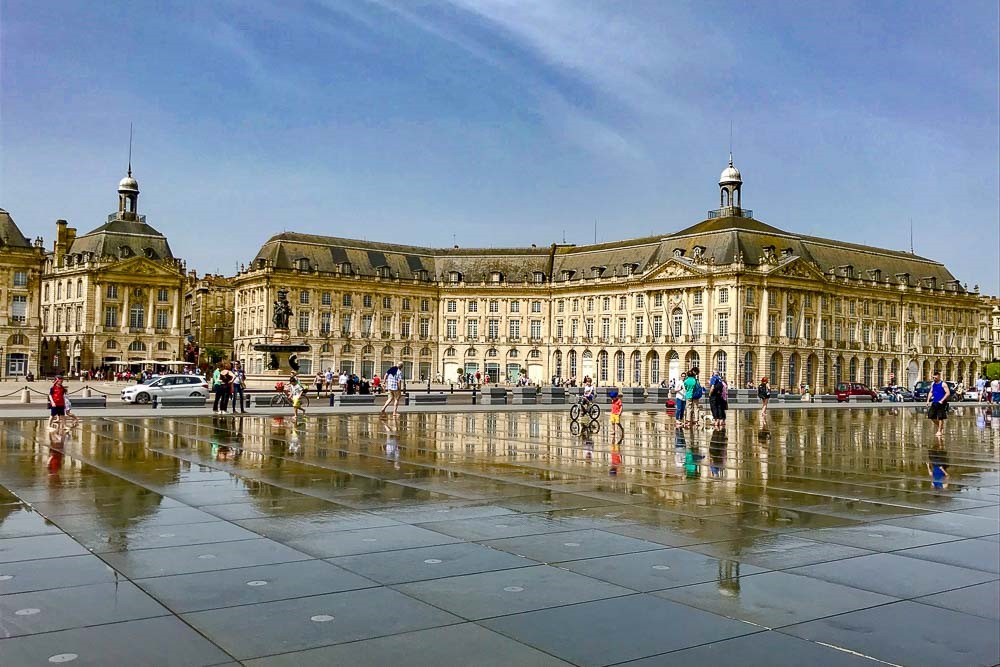
MUST DO IN BORDEAUX:
- Visit la Cité de la Vin: This “wine theme park” was opened in 2016 and is an immersive museum dedicated to wine. Not only will you read about vineyards around the world, how wine is made and the history of wine, but you will also smell and touch and hear about the process too. Included with the entry is a tasting glass of one of the wines of the world on the eighth floor, to be enjoyed with 360-degree views over the city.
- Do a Walking Tour: Bordeaux is a city best enjoyed on foot. With so much history and all the impressive buildings, a guided tour to learn about them while enjoying the relaxed city is the way to go.
- Visit Miroir d’Eau: If anyone had told me one of my favourite things to do in Bordeaux would have been a pool of water I would have laughed. The world’s largest reflection pool is located in a great public area, and will likely have many people enjoying the area. The water is only two centimetres deep, so children (and adults) can often be found playing in it. Periodically the water drains to reflect the beautiful Place de la Bourse buildings in the background and create an unearthly mist before filling again.
Contribution and Photo from Josie of Josie Wanders
Reviews of Cité de la Vin | Reviews of Miroir d’Eau | Reviews of Walking Tours
Situated in the Pyrénées-Atlantiques region of southern France lies the small city of Pau. Pau is a city that is often overlooked by visitors in favour of larger nearby cities like Toulouse and Biarritz, but it really shouldn’t be. Pau is an incredibly beautiful city, and the lack of other tourists only adds to its appeal.
The reason Pau is so often overlooked is to do with accessibility more than anything else. While Toulouse and Biarritz have plenty of international flights, Pau’s local airport has almost none. To get to Pau, you’ll probably need to fly to another airport and travel the rest of the way by train or car.
Although Pau has existed since at least the Gallo-Roman period, much of the layout and architecture of Pau really came into existence during the Belle Époque. During this period Scottish physician Alexander Taylor recommended the area for its moderate and healthy winter climate, and soon wealthy aristocrats from all over Europe began building villas and other beautiful buildings in the city.
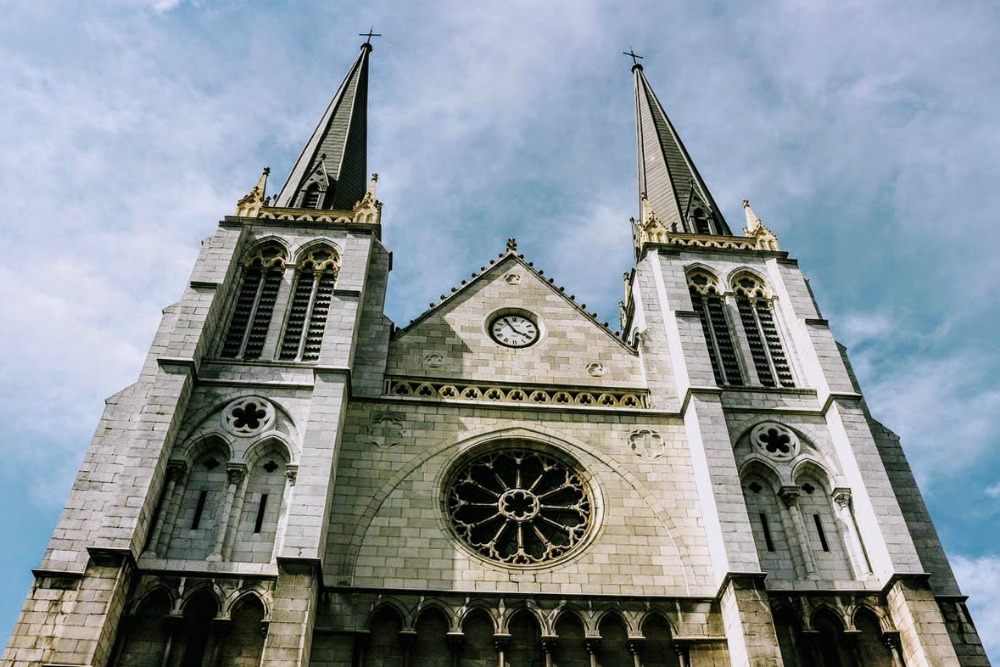
MUST DO IN PAU:
- Château de Pau: Birthplace of former French king King Henri IV, this castle has beautifully decorated rooms with coffered ceilings and gilded walls. Tours are only available in French and Spanish, but you can get a booklet in English.
- Musée des Beaux-Arts: Founded in 1864, this small art gallery is the second most important in the Aquitaine region and houses works from artists like Edgar Degas, Louis-Maurice Boutet de Monvel, and Alfred Boucher.
- Jurançon Vineyards: Wine lovers should visit the vineyards just outside of Pau, which are part of the Jurançon wine region. This wine region, relatively unknown outside of France and wine circles, is famous for its high-quality dessert wines and many of the vineyards offer tours and tastings.
Contribution and Photo from James of This Travel Guide
The Dordogne region in the southwest of France covers a large area filled with medieval towns, farmlands, chateaus and vineyards. The most famous city is Sarlat-la-Canéda, with a population of just under 10,000.
The town itself dates back to Medieval and Renaissance times and is full of beautiful sandstone buildings, bustling squares, and narrow alleyways that are perfect for wandering. The small old town is pedestrianized and one of the best things to do is to wander and get lost in the maze of cobbled streets.
In the countryside around Sarlat-la-Canéda, you’ll find some of France’s beautiful castles like Château de Beynac and Castelnaud, several of the country’s prettiest small towns like La Roque-Gageac, built into a cliff on the banks of the Dordogne River, and stunning gardens such as Marqueyssac.
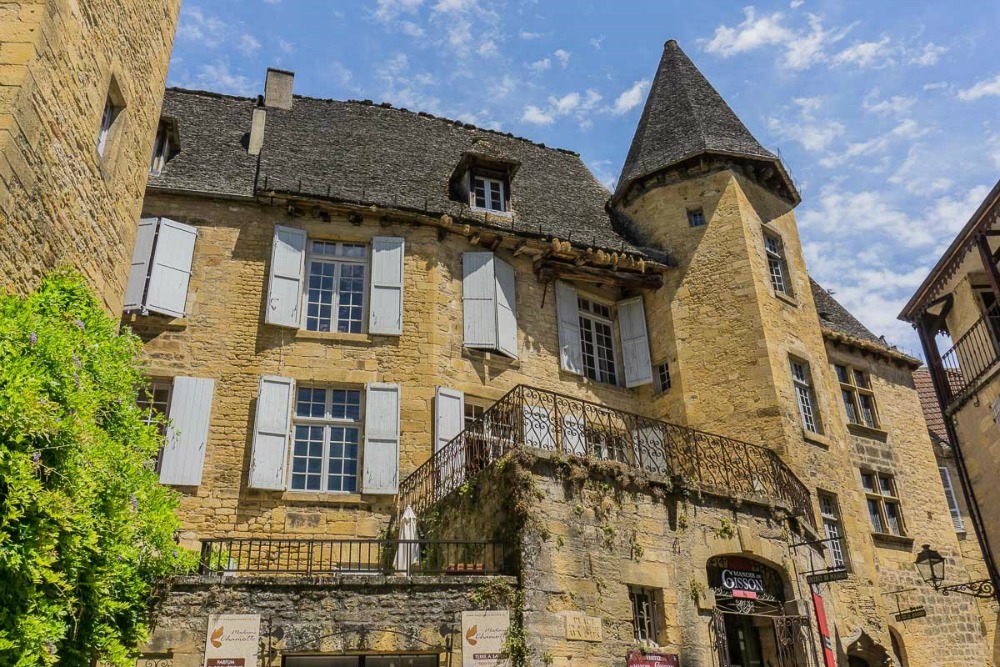
MUST DO IN SARLAT-LA-CANÉDA:
- Sarlat Panoramic Lift: View the town from above in the Sarlat Panoramic Lift. The lift rises in the centre of the bell tower of the 14th century Saint Mary’s Church, and with glass walls gives a 360-degree view around the town and rooftops of Sarlat.
- Sarlat Markets: The Saturday morning market in Sarlat is the biggest, with many stalls in the streets surrounding the Cathédrale St-Sacerdos. You can find plenty of French delicacies like foie gras, truffles, and cheeses, as well as other produce and meats. There is a smaller version on a Wednesday, and throughout the rest of the week, you can also attend the smaller indoor market in Saint Mary’s Church, next to the Panoramic Lift.
- Visit the Old Town: You can wander the Old Town yourself, step inside some of the museums, historic churches and gardens, or take a guided tour to learn more about one of the most beautiful Medieval towns in Europe.
Contribution and Photo from Sonja of Migrating Miss
Périgueux is the capital of the beautiful Dordogne region in France and is a town with a history that stretches back over 2,000 years to the Roman times.
Whilst many visitors to the Dordogne head to the southern region and visit towns like Sarlat, I’d highly recommend that you look a bit further north and include Périgueux on your visit to the Dordogne!
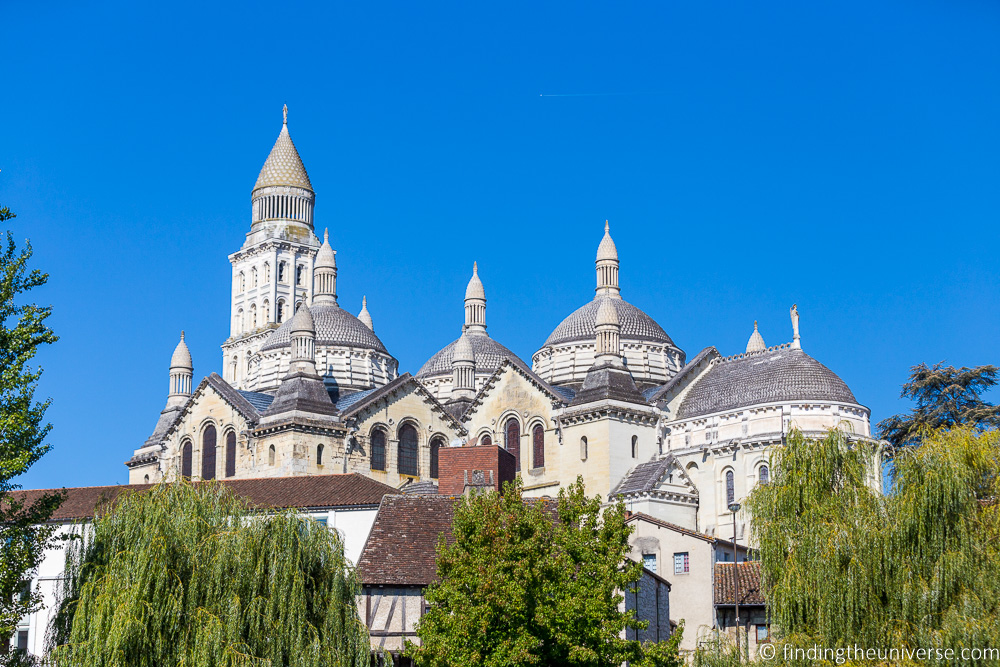
MUST DO IN PÉRIGUEUX:
- Explore the Town: Found on the banks of the Isle River, Périgueux has a lot to offer visitors. First, there’s fascinating Roman and Medieval history including a tower and an amphitheatre which date from Roman times, as well as a number of old medieval streets and buildings to explore. Just a simple stroll around the relatively compact city centre will reveal many beautiful buildings and streets – as well as lots of places to sit, eat, and watch the world go by.
- Gallo Roman Vesunna Museum: True lovers of Roman history won’t want to miss this museum, found near the town centre. This was built around the remains of a Roman villa and showcases mosaics and many other features of a Roman villa, including the underfloor heating system.
- Saint-Front Cathedral: Another must-see highlight is the domed and turreted Saint-Front cathedral. This is a UNESCO World Heritage site and parts of it date as far back as the 10th century. If you’ve visited the Sacré-Coeur atop Montmartre hill in Paris, you’ll definitely recognise the architectural style, as it was based on the Périgueux cathedral!
Contribution and Photo from Laurence of Finding the Universe
Reviews of Vesunna Museum | Reviews of Saint-Front Cathedral
Located in the heart of Bordeaux wine country, Saint-Émilion’s relationship with the grape goes back over 2,000 years. Being on a pilgrimage route meant many churches and monasteries were built in and near the town since the 11th-century; the whole area’s importance to history meant it was granted UNESCO World Heritage status in 1999.
Walking the cobbled streets today you’ll find plenty of surprises to keep you wanting to explore around the next corner, from the historic Petite and Grand Fontaines, ancient city gates, an underground church, or the only Roman keep still intact in the area.
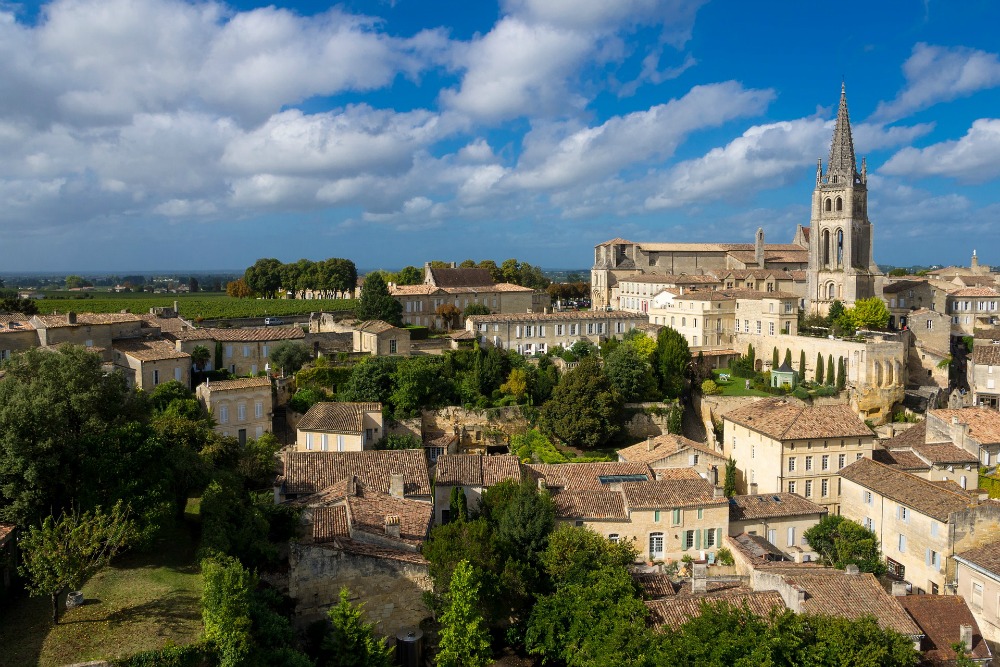
MUST DO IN SAINT-ÉMILION:
- Climb up for a panoramic view: Whether you climb the 32m La Tour du Roy or the 68m bell tower of the monolithic church, you are sure of great views across the town and the surrounding area as well as enjoying a historic monument.
- Underground Tour: Explore all of the town’s underground monuments on a guided tour including the Trinity Chapel with its 14th-century paintings, the amazing monolithic church that is hewn from solid limestone and the largest in Europe, the hermitage and the catacombs.
- Take a Wine Tour: Being in the heart of Bordeaux’s wine-growing region, a tour of the local wineries and vineyards is a great way to spend a morning, afternoon, or maybe a whole day! If wine isn’t your thing, then maybe instead try a macaron (or pair the two). Not the colourful items with filling you are used to, these are the much plainer looking original macarons which Saint-Émilion is credited with inventing, but delicious nonetheless.
Not far from the Spanish border, almost as far south as you can get in France, Collioure has a strong Catalan culture and was besieged and occupied by the Spanish in 1793.
Its medieval streets and Royal castle have inspired artists such as Matisse and Picasso and it is the birthplace of Fauvism with its strong colours and brushstrokes.
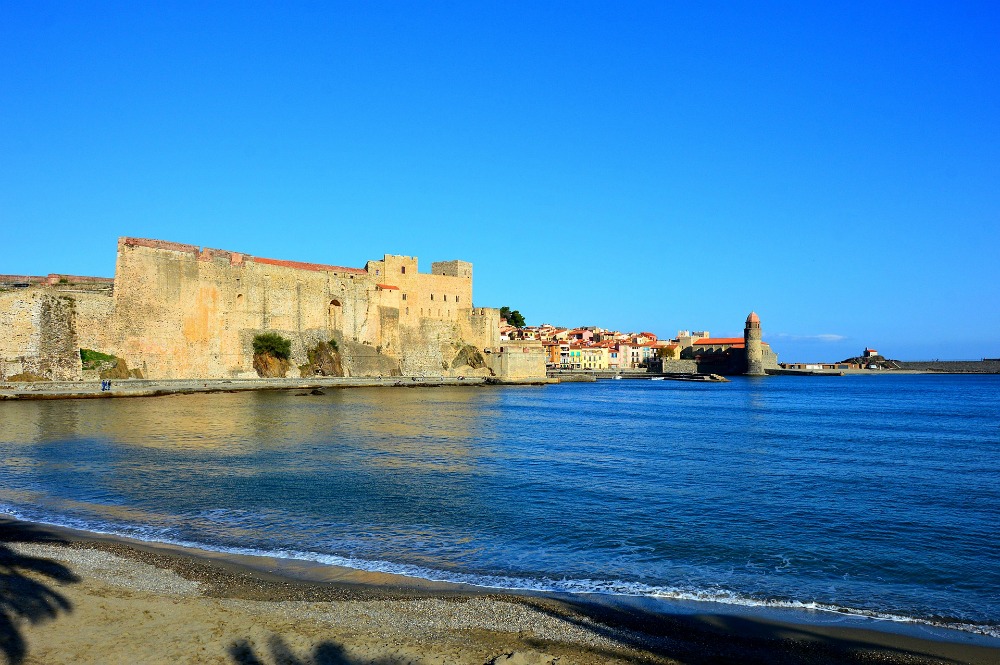
MUST DO IN COLLIOURE:
- Path of Fauvism: This walk will take you to 19 spots where famous paintings by Matisse and Derain were inspired and these artists painted some of their most famous works. At each spot on the walk, there are information panels or you can take a guided tour from the tourist office by reservation.
- Fort Saint-Elme: Walkable from the town in around 30-minutes, though it does require a 140m ascent, Fort Saint-Elme is a well-preserved 16th-century (although a watchtower stood here as early as the 8th-century). Today it houses a museum of arms from Medieval and Renaissance eras as well as stunning views across the Mediterranean and down into Collioure.
- Explore the harbour: From the impressive Royal Chateau which dominates the harbour and offers excellent views of the town, head north to the Church of Our Lady of Angels. This church’s bell tower is the town’s former lighthouse and has an amazing gold altar to admire. Continuing around the bay is the Chapel of St Vincent perched on a rock overlooking a beach and finally on a rocky promontory is an interesting lighthouse on one side of the entrance to the harbour.
Starting as a trading post by the Romans in 118 BC along the new road between Italy and Spain, Narbonne’s location on major trade routes and links to the sea via the Aude Rive ensured its importance. However it began to decline in the 14th-century partly due to the alteration in the course of the Aude River meaning navigation to the sea became more difficult.
The building of the Robine Canal to retain coastal access via the Canal du Midi meant the city could maintain its links.
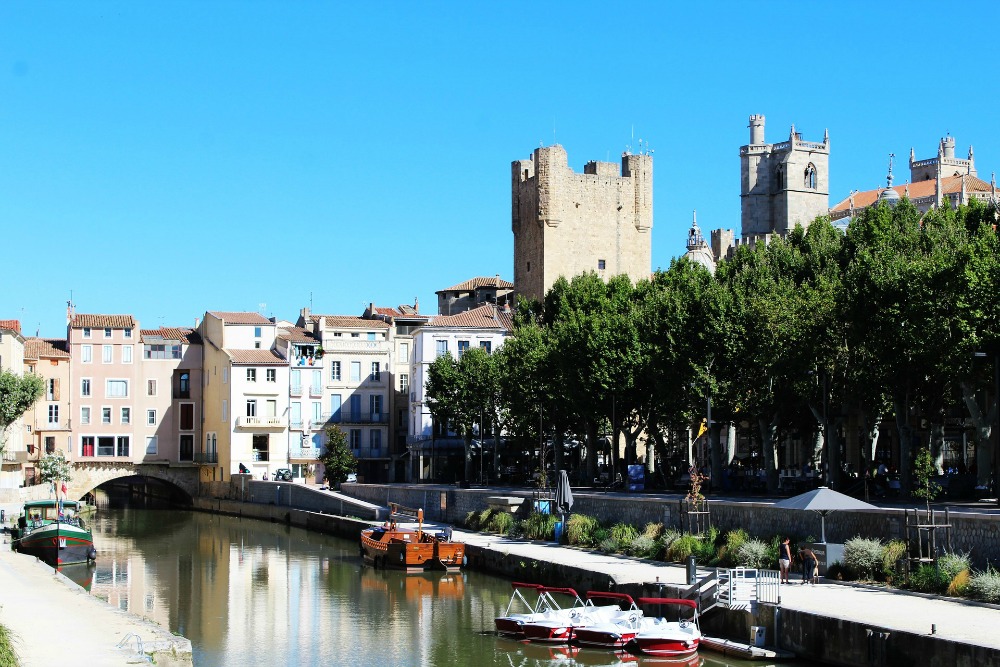
MUST DO IN NARBONNE:
- Roman Horrea: Believed to be a Roman warehouse used to store grain, these underground galleries were built around the 1st-century AD and have only been partially excavated for modern-day visitors to explore. They are the only ancient monument in Narbonne they consist of a network of tunnels leading to individual rooms where goods could have been stored.
- Narbonne Cathedral: One of the tallest cathedrals in France and towering over the town, Narbonne Cathedral is nevertheless unfinished to this day. The change in fortune of the town, the requirement to demolish the city wall to finish the cathedral and the arrival of plague amongst other things, meant the building work stopped and was never restarted.
- Les Halles: A feast for the senses, from the architecture of this covered market to the many delicacies within. Spend some time wandering the many shops inside selling basic staples as well as delicious pastries, olive oil, jams, vinegar and local honey. A great place to take back an edible souvenir from your trip.
Reviews of Roman Horreum | Reviews of Narbonne Cathedral | Reviews of Les Halles
Famous for the tile-based board game of the same name, Carcassonne is the largest walled city in Europe that still retains its defensive wall and it is a UNESCO World Heritage Site.
Though the defensive walls were left to decay for many years, they were restored in the 19th-century, though it is said not in a historically accurate manner.
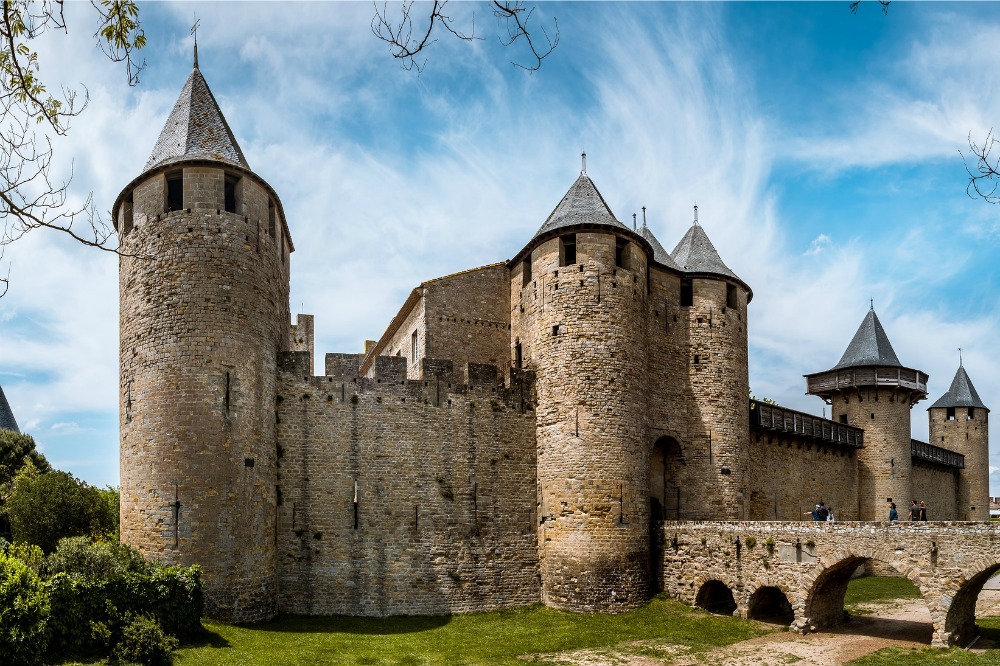
MUST DO IN CARCASSONNE:
- Walk the walls: At three kilometres (a little under 2 miles) a walk around the walls can take a couple of hours as you explore the 52 towers, ascend Bishop’s Tower which straddles both of the cities walls and admire the views.
- Basilica of Saints Nazarius and Celsus: Built over many centuries, from the 8th to the 13th this beautiful church is famous for its central stained-glass window which dates from 1280, making it one of the oldest in southern France. The window contains 16 biblical images including the massacre of the innocents, the flight into Egypt and the Last Supper.
- Cruise Canal du Midi: Just north of the lower town, next to the railway station, you can take a cruise on the Canal du Midi, which is also a UNESCO World Heritage site. The cruise goes through locks and out into the countryside as well as offering wonderful views of the walled city on the hill above.
Looking for more information to plan your visit to France? You may find these articles helpful.
RESOURCES | PLAN YOUR TRIP TO FRANCE
To book flights, rental cars, accommodations, and activities for your trip, please check out our recommended travel providers, favourite apps and websites.
- For all things France, you can’t go wrong with Rick Steves! Check out his France travel guide, full episodes of his TV show, or download his app for excellent audio tours.
Some of the links in the post above are affiliate links. This means if you click on the link and purchase the item, we will receive an affiliate commission but this does not affect the price to you. Please read our full disclosure policy here.





